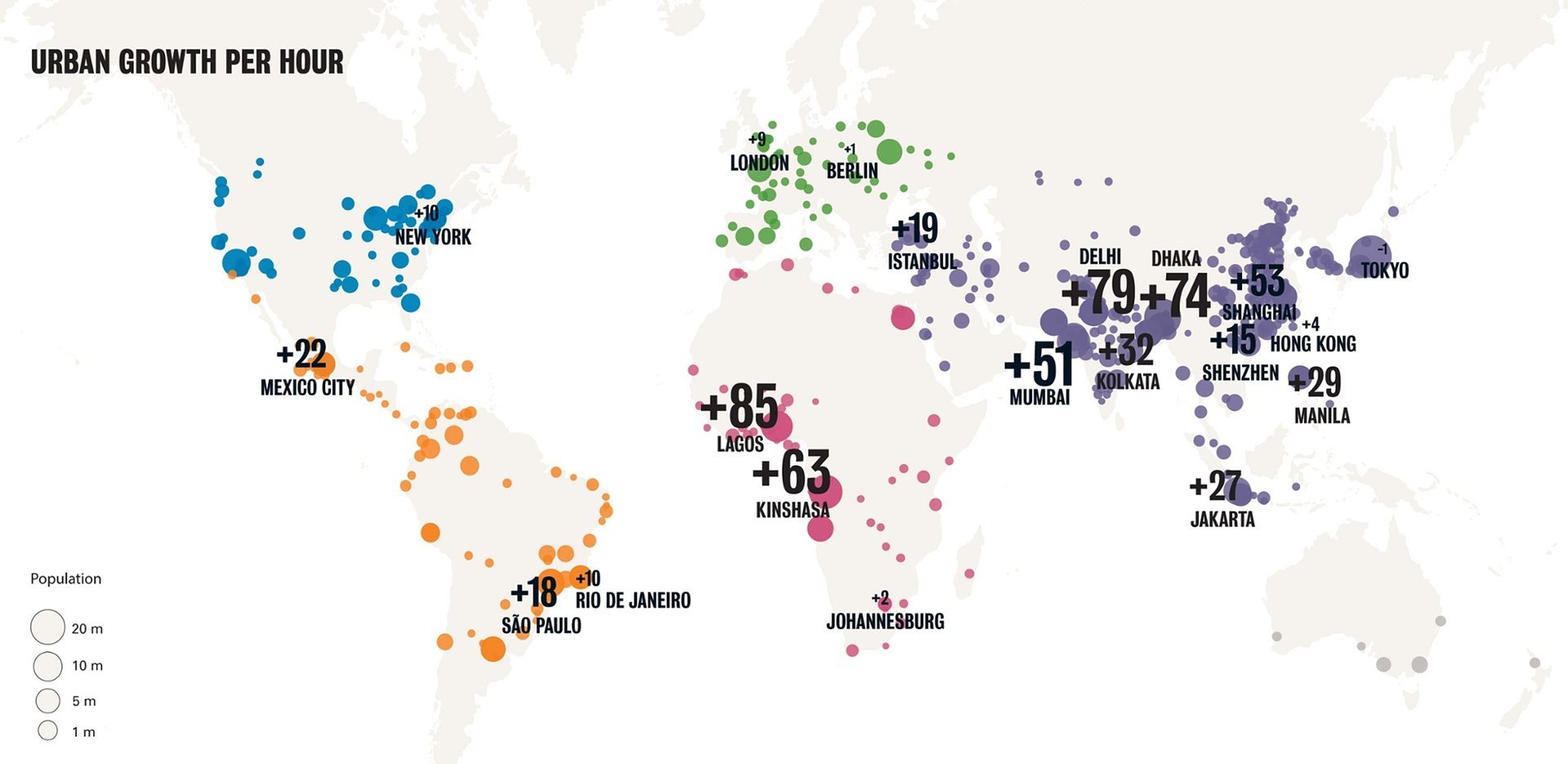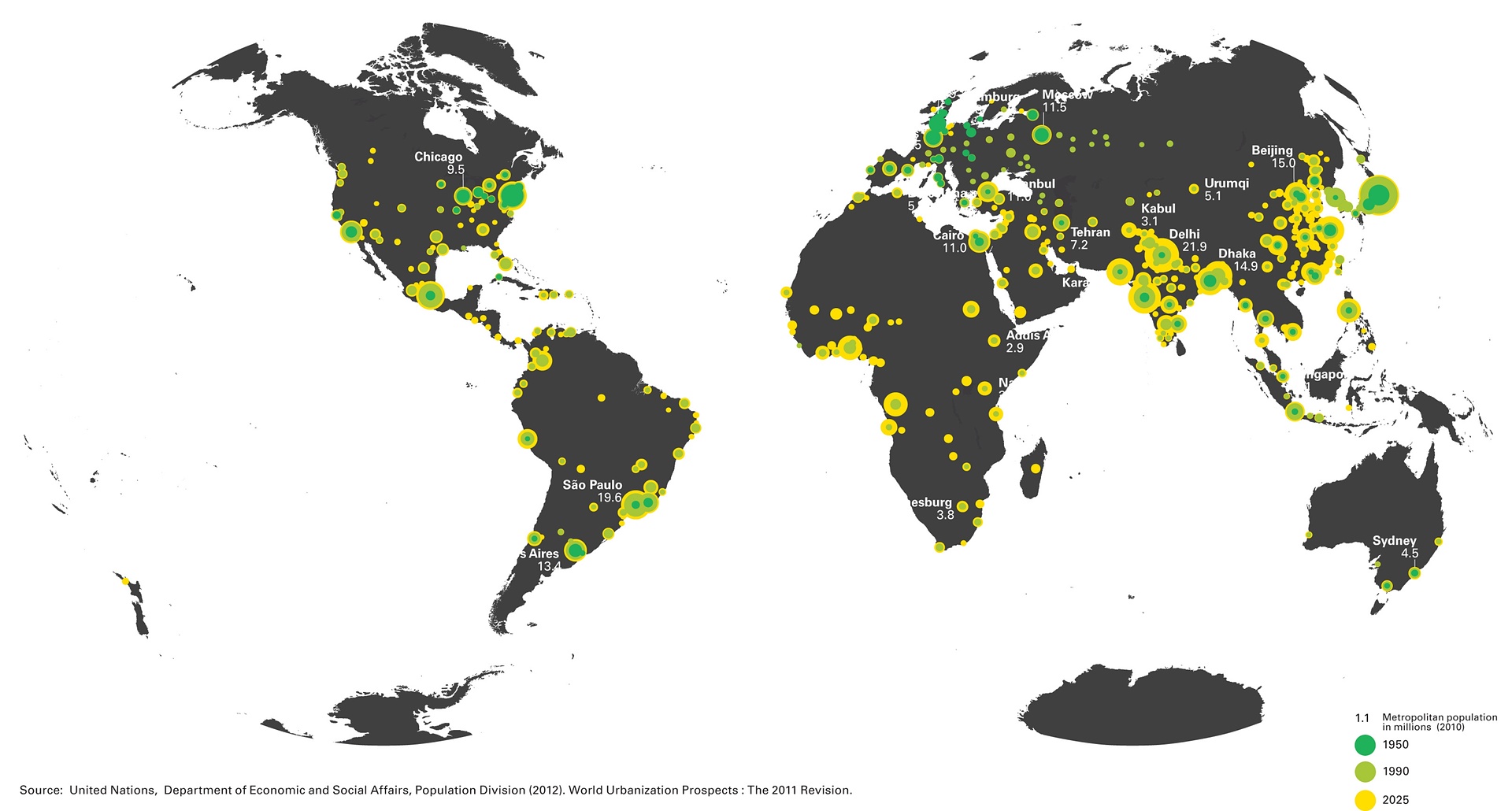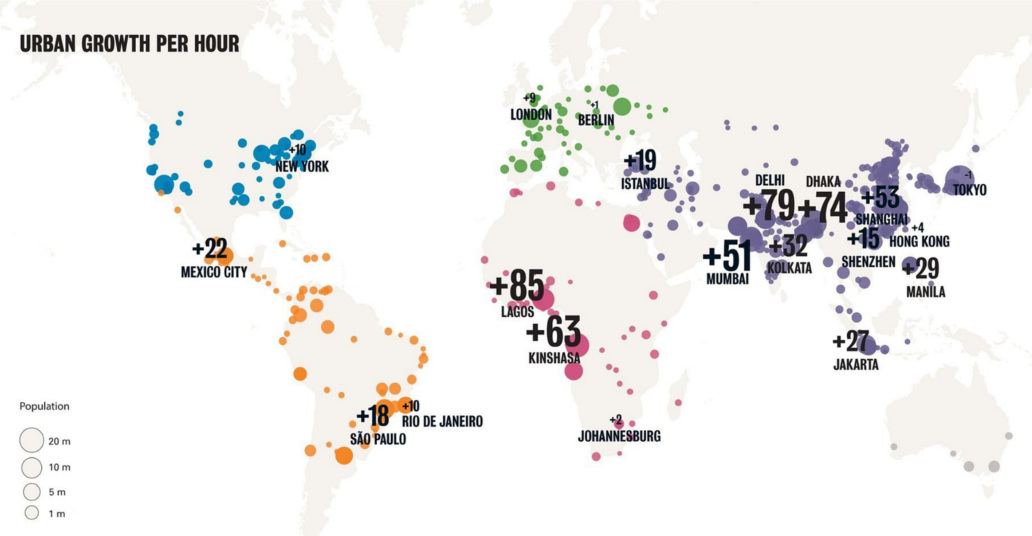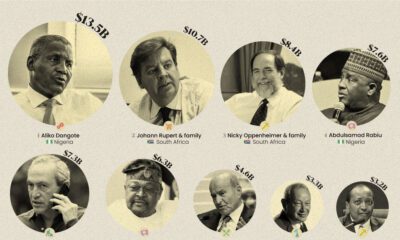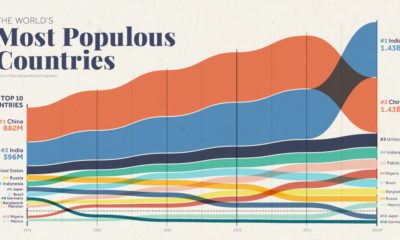Mapped: The World’s Fastest Growing Cities
The single most important demographic trend over the last century has been the rapid urbanization of the world. Just as recently as 1950, less than 30% of the total population lived in cities. By the year 2030? It is expected that 60% of the world will be urbanized. Highly developed countries already heavily rely on cities. People living in the United States (81%), Canada (82%), Australia (89%), or Germany (75%) mainly reside in urban areas, and there’s good reason for it. Take a look at this 3d map showing GDP contribution by city in the United States and you will notice that places like New York or Los Angeles have massive contributions to economic production. In fact, an impressive 52% of total economic output in the U.S. comes from the top 20 urban areas in the country. This is true throughout the rest of the world as well. According to McKinsey, the world’s 600 largest cities generate 60% of all economic output. It is this great economic opportunity that is driving people from their farms to the newest urban centers. Specifically, it is in Africa and Asia that the world’s fastest growing cities can be found. Countries such as China and India are at the forefront of this rapid development. New citizens are joining Delhi at a rate of 79 people per hour, while Shanghai continues to welcome 51 new citizens an hour. Africa will look very different than it has in the past as well. The World Economic Forum pointed out that in 1960 that Johannesburg was the only city in sub-Saharan Africa to have more than 1 million people. Fifty years later, there are 33 cities with more than 1 million in the region. The world’s fastest growing megacity? It’s Lagos, Nigeria and Fortune calls it the “Big Apple of Africa”. In the 1970s it had a measly 2 million people, but today it boasts 16 million people with a growth rate of 85 new Lagosians per hour. Original graphic by: The Guardian
on Even while political regimes across these countries have changed over time, they’ve largely followed a few different types of governance. Today, every country can ultimately be classified into just nine broad forms of government systems. This map by Truman Du uses information from Wikipedia to map the government systems that rule the world today.
Countries By Type of Government
It’s important to note that this map charts government systems according to each country’s legal framework. Many countries have constitutions stating their de jure or legally recognized system of government, but their de facto or realized form of governance may be quite different. Here is a list of the stated government system of UN member states and observers as of January 2023: Let’s take a closer look at some of these systems.
Monarchies
Brought back into the spotlight after the death of Queen Elizabeth II of England in September 2022, this form of government has a single ruler. They carry titles from king and queen to sultan or emperor, and their government systems can be further divided into three modern types: constitutional, semi-constitutional, and absolute. A constitutional monarchy sees the monarch act as head of state within the parameters of a constitution, giving them little to no real power. For example, King Charles III is the head of 15 Commonwealth nations including Canada and Australia. However, each has their own head of government. On the other hand, a semi-constitutional monarchy lets the monarch or ruling royal family retain substantial political powers, as is the case in Jordan and Morocco. However, their monarchs still rule the country according to a democratic constitution and in concert with other institutions. Finally, an absolute monarchy is most like the monarchies of old, where the ruler has full power over governance, with modern examples including Saudi Arabia and Vatican City.
Republics
Unlike monarchies, the people hold the power in a republic government system, directly electing representatives to form government. Again, there are multiple types of modern republic governments: presidential, semi-presidential, and parliamentary. The presidential republic could be considered a direct progression from monarchies. This system has a strong and independent chief executive with extensive powers when it comes to domestic affairs and foreign policy. An example of this is the United States, where the President is both the head of state and the head of government. In a semi-presidential republic, the president is the head of state and has some executive powers that are independent of the legislature. However, the prime minister (or chancellor or equivalent title) is the head of government, responsible to the legislature along with the cabinet. Russia is a classic example of this type of government. The last type of republic system is parliamentary. In this system, the president is a figurehead, while the head of government holds real power and is validated by and accountable to the parliament. This type of system can be seen in Germany, Italy, and India and is akin to constitutional monarchies. It’s also important to point out that some parliamentary republic systems operate slightly differently. For example in South Africa, the president is both the head of state and government, but is elected directly by the legislature. This leaves them (and their ministries) potentially subject to parliamentary confidence.
One-Party State
Many of the systems above involve multiple political parties vying to rule and govern their respective countries. In a one-party state, also called a single-party state or single-party system, only one political party has the right to form government. All other political parties are either outlawed or only allowed limited participation in elections. In this system, a country’s head of state and head of government can be executive or ceremonial but political power is constitutionally linked to a single political movement. China is the most well-known example of this government system, with the General Secretary of the Communist Party of China ruling as the de facto leader since 1989.
Provisional
The final form of government is a provisional government formed as an interim or transitional government. In this system, an emergency governmental body is created to manage political transitions after the collapse of a government, or when a new state is formed. Often these evolve into fully constitutionalized systems, but sometimes they hold power for longer than expected. Some examples of countries that are considered provisional include Libya, Burkina Faso, and Chad.
